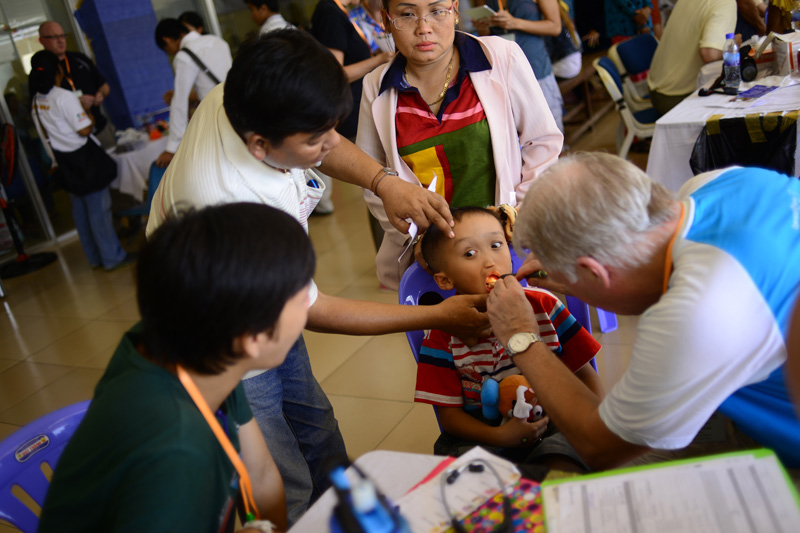In a bustling room at Khmer-Soviet Friendship Hospital in Phnom Penh, doctors from the Philippines, the U.S. and Nigeria gathered Sunday around a young boy, sitting in a plastic chair, and asked him to open his mouth wide.
The boy is one of more than 100 people who will be treated by an international and local team of experts from the surgical NGO Operation Smile during its 36th mission in the country.

But this mission will be different.
Up the hospital’s stairs, a $100,000 cleft clinic—equipped with four operating theaters fitted out with state-of-the-art equipment—officially opens today.
One theater will permanently be used for the correction of cleft lips and palates, and the other three will be used when the hospital needs to perform other surgeries.
For Dr. Mok Theavy, the medical director and founder of Operation Smile Cambodia, the opening of the new clinic marks another turning point in the treatment of the facial deformity in Cambodia.
“We don’t have research on the incidence of the cleft…we don’t have studies,” he said Sunday, “but we know in developing countries…it’s one in 500.”
The rate of cleft lip and cleft palate are higher in developing countries than in developed countries, he said, and are caused either by genetic or chromosomal problems, or by external factors during pregnancy, such as poor pre-natal nutrition or exposure to certain chemicals.
“The risks are not only cosmetic,” he said. “It affects the teeth, so they cannot close. Also feeding—babies mostly come with malnutrition because the cleft means they cannot suck when breastfeeding.”
Hearing and speech problems are also common and require follow-up treatment such as speech therapy, he said. “When we don’t treat patients with a cleft palate, after six years of age, the result is not perfect,” he said.
So it is a priority to perform surgery when children are small.
Typically, babies as young as six months receive cleft operations, although older patients have also come in for corrective surgery. It takes about an hour to fix a cleft lip and up to two hours for a cleft palate.
It’s a daunting prospect for many people—particularly children. One of the benefits of the new clinic is a playroom replete with colorful murals on the wall where youngsters can be eased into the process and have it explained to them in a child-friendly way.
The new space is a testament to how far the treatment of the deformity has come since Operation Smile held its first surgical mission in Cambodia in 2002. And for Dr. Theavy, it presents an opportunity to educate people to try and prevent it from occurring in their own babies.
“We have discussed many times how we could improve the cleft care,” he said.
“So first, we will try to treat the clefts. Secondly, we plan for the future to reduce the risks of it by teaching people how to prevent cleft and also work with the Ministry of Health to provide us with information as to how many cleft cases there are.”
In the room downstairs, the local and international doctors continued working through the afternoon, meeting patients. By the end of the mission, in about nine days, many of them should have smiles on their faces.




